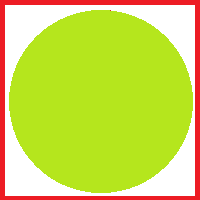Concentration and Molarity
This unit is under construction (BUT, the practice problems on the right work)
Molarity (M) is a measure of concentration common in chemistry. It is a measure of then number of moles of a solute per unit volume of solution. In most cases, the unit of volume is the liter (L), so molarity becomes moles-per-liter, or mol/L.
The symbol for molarity is the capital letter, M. It is sometimes italicized or used with a hyphen. It should not be fogotten when performing dimensional analysis that molarity is derived from the two other units, moles and liters.
Molarity (M) can be calculated by dividing the total moles of a solute by the number of liters of total solution. This is not the same as dividing by liters of the solvent.
If total moles of solute are known, then
.....
Texas Standards
The TEKS associated with this topic is
§112.35 (c)(10)(C) "calculate the concentration of solutions in units of molarity;."
(supporting standard)

Practice Problems
Click on the circle above for an unlimited number of molarity and concentration practice problems. Also, there are several questions on worksheets based on the article that can be of use.
Concentration
More about Concentration
There are several other common units of concentration not required in the Texas Essential Knowledge and Skills (TEKS) for chemistry. A common unit used in industry and in calculating colligative properties is molality (m). It is frequently confused with molarity (M), because of the similar sounding name. Molality is a concentration unit based on moles of solute per kilogram of solvent. In other words, both solute and solvent can be given in terms of mass, rather than volume. This is more useful in situations where large changes in temperature are possible; because temperature changes the volume of a solution due to expansion and contraction, it must also change molarity. Molality is temperature independent because mass does not change with temperature.
In the case of molality, and if the solvent is water, one kilogram of water has a volume of approximatly one liter. In a very dilute solution, addition of the solute to one kilogram of solvent does not significantly change its volume. In this case molality and molarity are essentially the same; however, as the amount of solute goes up molarity and molality begin to diverge. This happens because if you start with one kilogram of water (one liter) and then add solute, the volume goes up at the same time as the concentration. With molarity the basis is a unit volume (one liter) which does not change with increased solute. In effect, as the solute amount goes up, the solvent amount must go down so that the total remains one liter.
Add EXAMPLE HERE 0.1mole added to 1 L (kg) water makes 0.1 molal, but volume increases to 1.01 liter so 0.1/1.01 =0.099 Molar, etc. split becomes larger as more is added.

